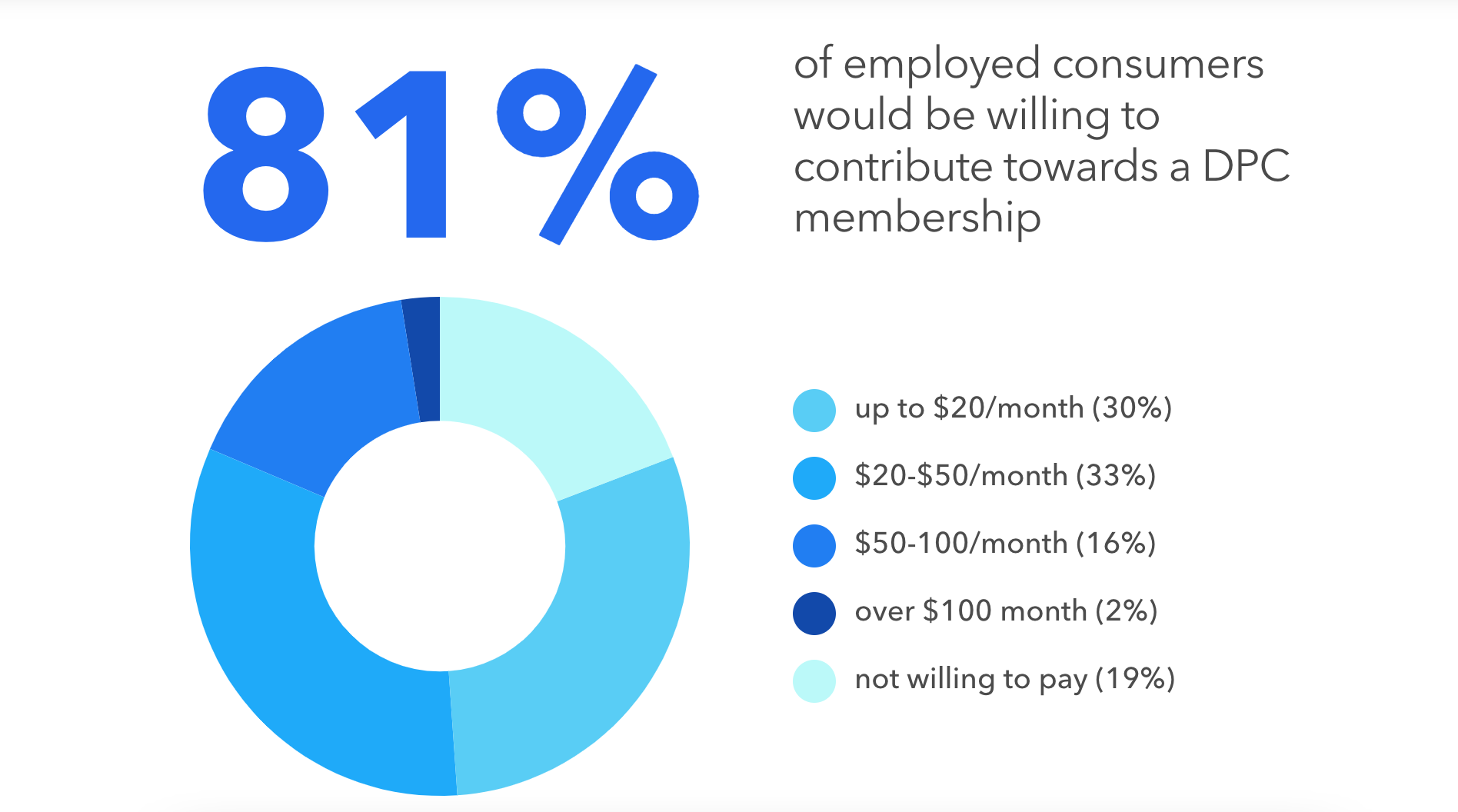Hint Health recently released the 2022 Direct Primary Care Consumer Insights Survey Report, which reflects results from a consumer survey that Hint Health conducted last year to understand the awareness of and need for direct primary care amongst the general population. The survey illustrated important key themes including the fact that 68% of consumers are unaware of the DPC model of healthcare.
When exploring the dissatisfaction with the current healthcare system, the chief complaint is that it is too expensive (52%). Other issues included the healthcare system is too confusing, the care not being personal enough, and care not sufficiently focused on staying healthy. Evidently, consumers are not seeing nor getting value out of the traditional healthcare fee-for-service model.
In terms of direct primary care, the most appealing aspect for respondents is the all-inclusive fee. This makes sense because people are often confused about traditional health plans and what it covers and what it does not cover. The fact that direct primary care is transparent with membership rates and what membership offers is very enticing. The other benefits of DPC that rated high with respondents included same-day or next-day appointments and a stronger doctor-patient relationship. Only 11% of consumers ranked unlimited access to care as the most appealing aspect.

Since cost is a concern with traditional health care, it is undoubtedly also a concern when it comes to DPC. When presented with the option for direct primary care, most respondents were open to enrolling, especially younger employees aged 25-34 year old and those with families at home. When employed consumers were asked if they would be willing to pay for a portion of the membership fee, an overwhelming majority (81%) would be willing to contribute with most being willing to pay up to $20 per month or $20-$50 per month. Only a small minority would not be willing to pay anything (19%). This illustrates that employers may not necessarily need to cover 100% of membership fees to introduce DPC in their benefit plans for employees.
It is clear that people are frustrated with the current healthcare system and want high quality care at an affordable cost that they can foresee and have the assurance of the care they can expect. It is also evident that not enough people know about direct primary care and the value that it provides. About 71% of the people surveyed, would be open to signing up for DPC, but even if employers were to cover this benefit about 25% of respondents stated that they would need additional information on how membership would improve their healthcare overall.
There is more work to do to uncover additional data around the optimal outcomes that direct primary care provides in comparison to the standard model of healthcare, which relies on fee-for-service reimbursements from health insurance companies.
At Hint Health, we are committed to sourcing and publishing data around direct primary care as we did earlier this year with the 2022 Trends in DPC Report. We are also in the midst of conducting research on results of DPC + Hint Core in the Innovation Lab in conjunction with AAFP. Early findings of the Innovation Lab show that physicians reported having “inadequate or constrained” time with patients when operating under fee-for-service parameters but “ample” time with patients when providing care under the DPC model.
Be sure to subscribe to our newsletter to get the latest updates on surveys, studies and data on direct primary care and more.

